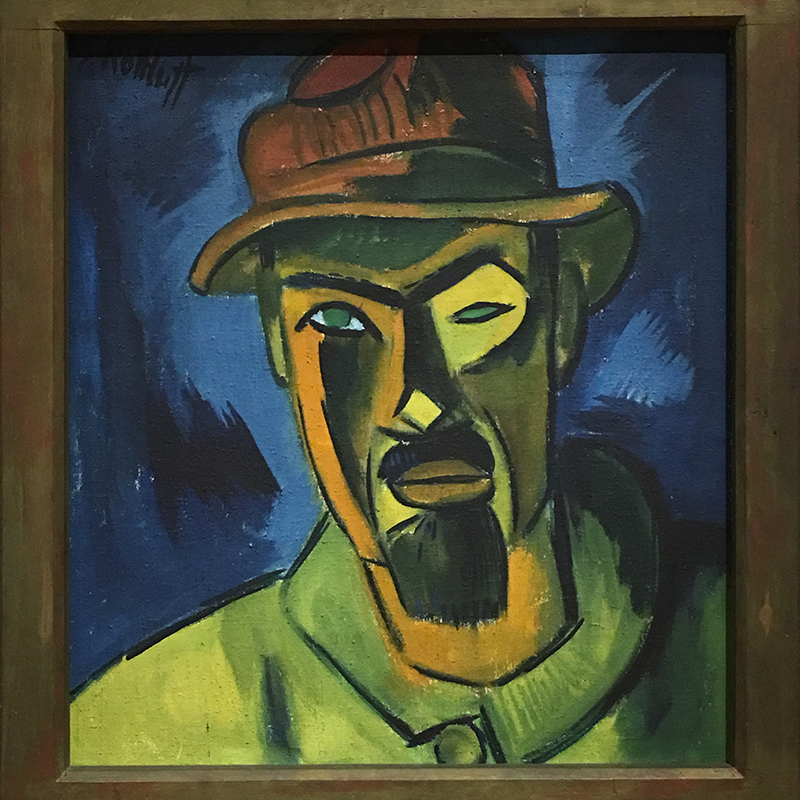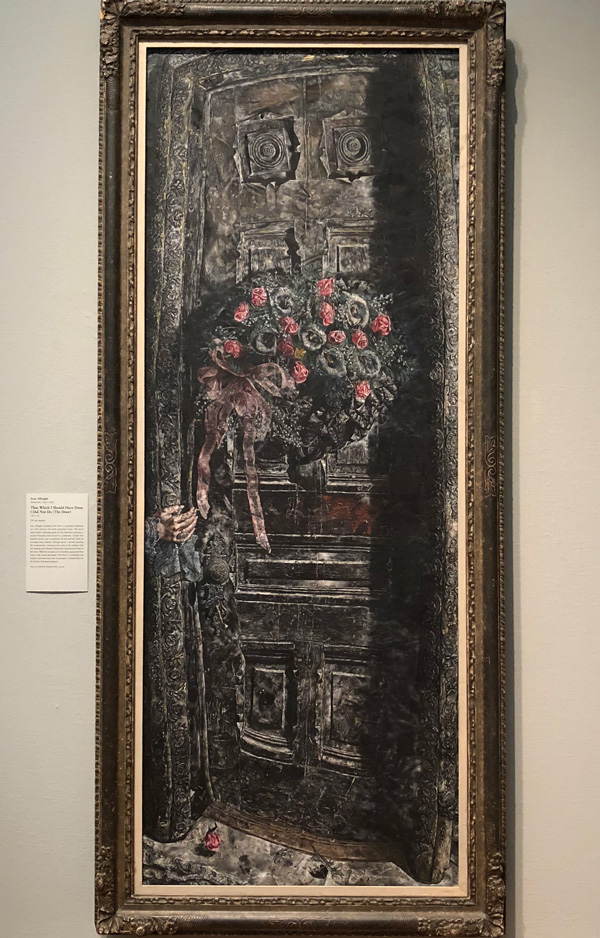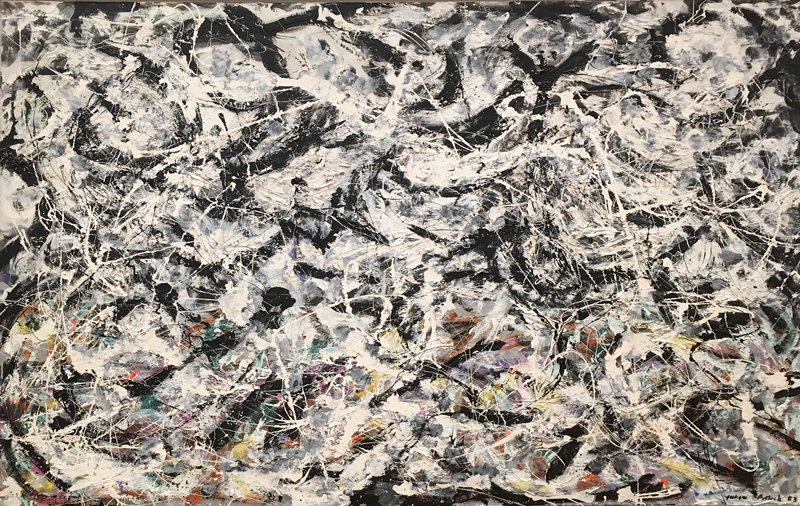
Portrait by Karl Schmidt-Rottluff
Creators may call their well of imagination the subconscious, their personal muse, or something else. Regardless of the terminology, the imagination exists in a continual state of ravenous hunger, which may be fed in a variety of ways. Inspiration may be found in nature, by reading, viewing films or television shows, people watching, listening to music, and more. One of my favorite ways to refill my creative well is by viewing art.
I follow a number of artists on social media and frequently visit art museums. The fantastic thing about art is the subjectivity. People bring a distinct perspective to each piece, allowing for unique experiences.
From the first time I spied Karl Schmidt-Rottluff’s self-portrait at the Cleveland Museum of Art, I was transfixed. The colors and the bold lines drew me in. His choice to make the eyes different fascinated me. The painting speaks volumes about the artist’s view of himself and his world. In 2016, as part of the centennial celebration, the museum borrowed another of Schmidt-Rottluff’s works from the North Carolina Museum of Art and hung the painting beside his self-portrait. “Portrait of Emy” depicts the artist’s photographer wife, Emy Frisch. Schmidt-Rottluff created the pieces to celebrate their marriage.

The Door by Ivan Albright
The works give further insight into the artist’s personality, his life, and his relationship with Emy. The portraits reveal not only Schmidt-Rottluff’s love for his wife, but the similarities in the style and the reason for their creation is an expression of their loving relationship. An abundance of creative fodder may be found in the works separately, which increases exponentially when they are hung side by side
I imagine writing an edgy noir story to go with his self-portrait. Emy’s picture inspires a femme fatale character. There are plenty of possibilities for romance stories as well.
Two of my favorite pieces at the Art Institute of Chicago are Ivan Albright’s “That Which I Should Have Done I Did Not Do (The Door)” and Jackson Pollock’s “Greyed Rainbow.”

Greyed Rainbow by Jackson Pollack
Albright spent ten years creating his painting, ensuring every inch met his artistic vision. The piece is huge at 97 x 36 inches and evokes a haunting sadness, which could inspire anything from a horror story to a gothic tale of betrayal.
Pollock’s abstract expressionism piece “Greyed Rainbow” features his iconic paint drips. The energy the artist used to create the piece is apparent. At first glance, a viewer might only notice the stark grey, white, and black color palate, but upon deeper observation, the rainbow colors of orange, yellow, green, blue, and violet emerge. To me, the painting speaks of the rainbow after the storm, the beauty found in almost anything if one looks close enough, and the layers of a person or an experience. “Greyed Rainbow” is poetry in motion.
I challenge you to visit an art museum or open up an internet browser to take a close look at a work of art. You’ll rack up bonus points if the piece resides outside your comfort zone. Go deep by viewing the work up close and from a distance. Experience the color and the texture of the piece. Imagine what the creator felt while bringing the work to life. Wonder what inspired the creation. Explore the emotions the work evokes and craft your own creation.